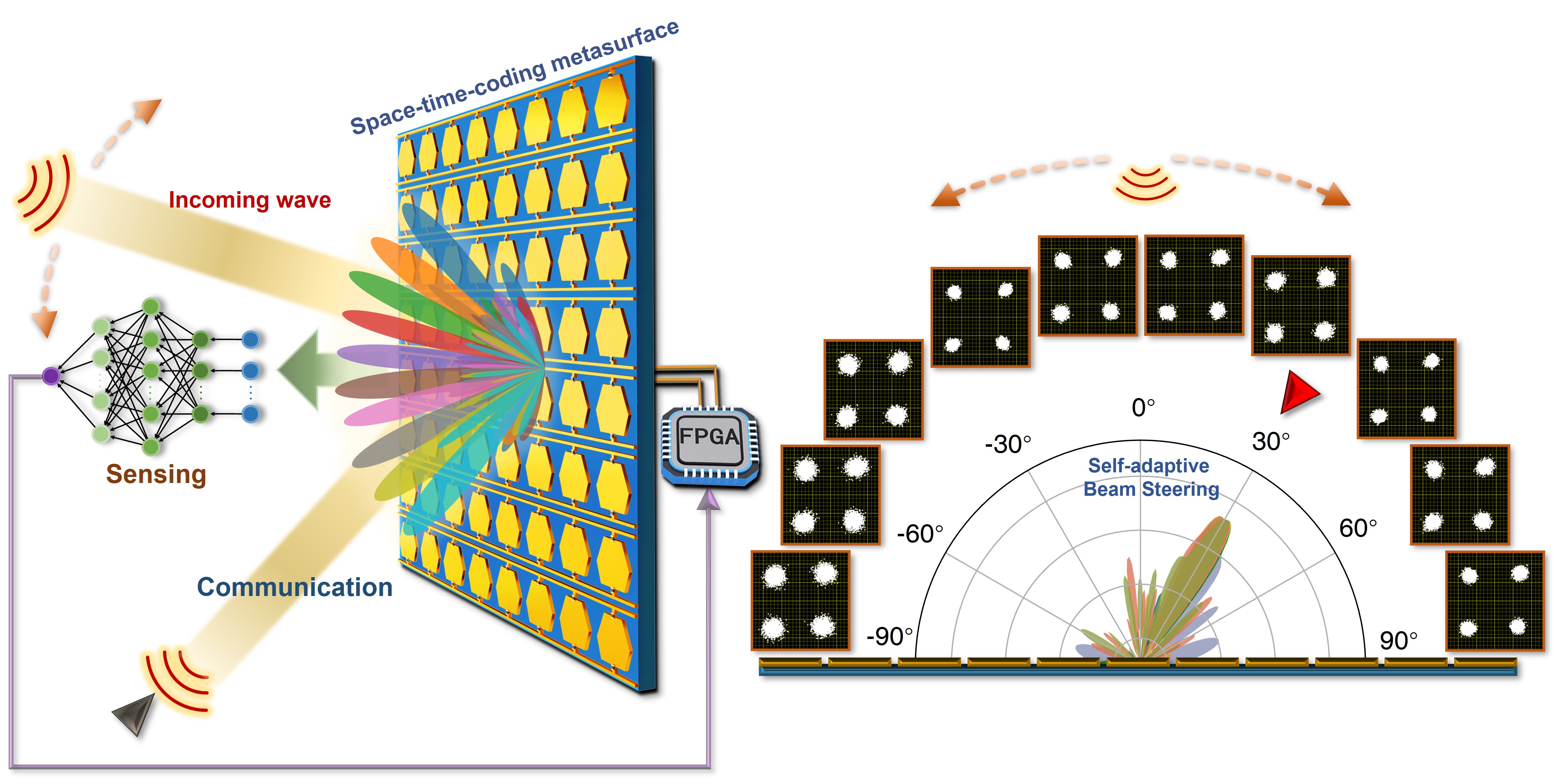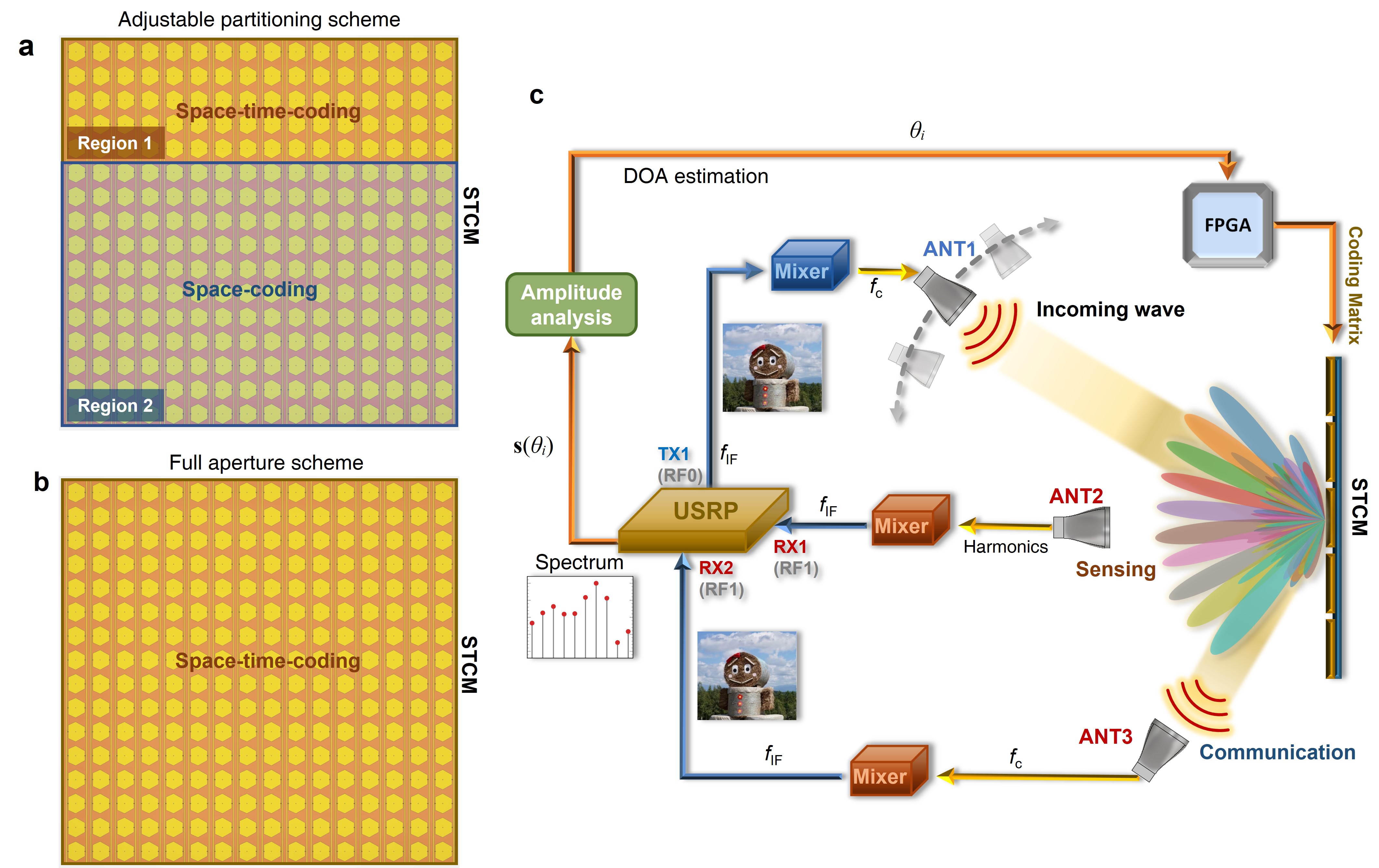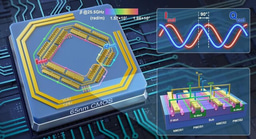Integrated Sensing and Communication with Space-Time-Coding Metasurfaces
Published in Electrical & Electronic Engineering and Materials

Integrated sensing and communication (ISAC) stands out as a prominent candidate for the sixth-generation (6G) wireless communication systems, attracting significant interests from researchers across various disciplines. ISAC aims to seamlessly integrate sensing and wireless communications by leveraging shared spectra, hardware platforms, and signal processing functions, thereby balancing the performance while reducing the hardware costs and energy consumption. Programmable metasurfaces (PMs), also known as reconfigurable intelligent surfaces (RISs) in the communications community, are engineered planar structures that can dynamically steer electromagnetic (EM) waves, reshape wavefronts and produce diverse scattering patterns. These advanced EM manipulation capabilities not only facilitate the signal modulations but also enable the communication and sensing systems to achieve adaptive and intelligent wireless environments. The synergy between PMs/RISs and ISAC systems holds promising potential for driving forward the evolution of 6G wireless network technologies. PMs/RISs are typically operated using fixed space-coding (SC) patterns, which are managed by a central module for performing specific spatial beamforming functions. To manipulate the frequency spectra of EM waves, temporal encoding has garnered increasing interest, leading to the introduction of space-time-coding (STC) digital metasurface as an emerging and rapidly advancing research area. By carefully designing and optimizing the STC matrix for spatio-temporal modulation, these platforms can simultaneously manipulate both the spatial distribution and frequency characteristics of EM waves.
In this study, we propose a low-cost and efficient ISAC approach based on the STC metasurface (STCM). By tailoring the STC matrix, we use selected harmonics for wireless sensing, while simultaneously control the propagation of the fundamental frequency wave to establish reliable sensing and wireless communication links on a single platform. As depicted in Fig. 1, our scheme employs an STCM that manipulates the incoming EM wave, directing the fundamental frequency and concurrently generating spatially distributed harmonics. The fundamental-frequency carrier wave serves the communication function, while the spatial-spectral characteristics of harmonics are analyzed to accurately determine the direction of arrival (DOA) of targets. Using this DOA information, the coding pattern of STCM is adjusted adaptively to steer the beam direction of fundamental-frequency wave consistently toward the user’s location. This design enables simultaneous wireless communications and sensing without interference between the two functions. Moreover, even if the direction of the incoming wave changes, STCM will continuously sense the DOA information in real time and autonomously reconfigure its coding pattern to maintain a reliable communication link, thereby ensuring the desired communication quality.

Compared with conventional ISAC systems relying on phased array antennas, the proposed STCM-based ISAC system provides advantages in terms of reduced hardware cost and lower power consumption. Additionally, by using the harmonics for sensing, our approach removes the need for extra sensors or a dedicated control link from the base station (BS), allowing sensing and communication functions to be operated simultaneously without any interference. This method works by simultaneously managing the fundamental-frequency and high-order harmonic waves, enabling the analysis of harmonic spatial-spectral characteristics for DOA estimation while maintaining efficient communications through the fundamental-frequency carrier wave. By sharing the sensing information, this system enhances the communication performance through adaptive beamforming, embodying the resource-sharing principles of ISAC.
We present two coding strategies for STCM that allow simultaneous manipulations of both fundamental-frequency and harmonic waves, which are termed as “adjustable partitioning” and “full-aperture” schemes, as depicted in Figs. 2a and 2b. In the adjustable partitioning scheme, STCM is divided into two regions using distinct modulation methods, as illustrated in Fig. 2a. In this case, Region 1 employs spatio-temporal modulation, periodically switching its operating states according to the STC matrix; while Region 2 is configured with a space-coding pattern that can be altered as needed. The full-aperture scheme for STCM applies the spatio-temporal modulation across the entire metasurface, as shown in Fig. 2b. In this method, by specifying the desired beam-pointing direction for the fundamental-frequency wave, along with the angle of incidence, the duty cycle, and the time shift, the corresponding STC matrix can be generated. By designing the STC matrix, the propagation of fundamental- frequency wave can be controlled for communications, while generating multiple harmonics with distinct spatial distributions for sensing. Figure 2c shows the ISAC system architecture for simultaneous direction sensing and wireless communications.

We fabricated a prototype of a 2-bit reflection-type STCM. Through experimental testing, we demonstrated its capability to precisely and flexibly shape the fundamental-frequency wave and estimate DOA, and dynamically adjust the power allocation between the communication and sensing. We further developed and tested an ISAC system based on the STCM platform. The experimental results confirm its ability for real-time beam steering and DOA estimation. The proposed approach offers several advantages such as simplified hardware architecture, elimination of additional sensors, and cost effectiveness. These benefits significantly enhance the potentials of STCMs and RISs, positioning them as pivotal technologies for the future communication systems.
Read the full paper here: [Integrated Sensing and Communication with Space-Time-Coding Metasurfaces]
Follow the Topic
-
Nature Communications

An open access, multidisciplinary journal dedicated to publishing high-quality research in all areas of the biological, health, physical, chemical and Earth sciences.
Related Collections
With Collections, you can get published faster and increase your visibility.
Women's Health
Publishing Model: Hybrid
Deadline: Ongoing
Advances in neurodegenerative diseases
Publishing Model: Hybrid
Deadline: Dec 24, 2025



Please sign in or register for FREE
If you are a registered user on Research Communities by Springer Nature, please sign in